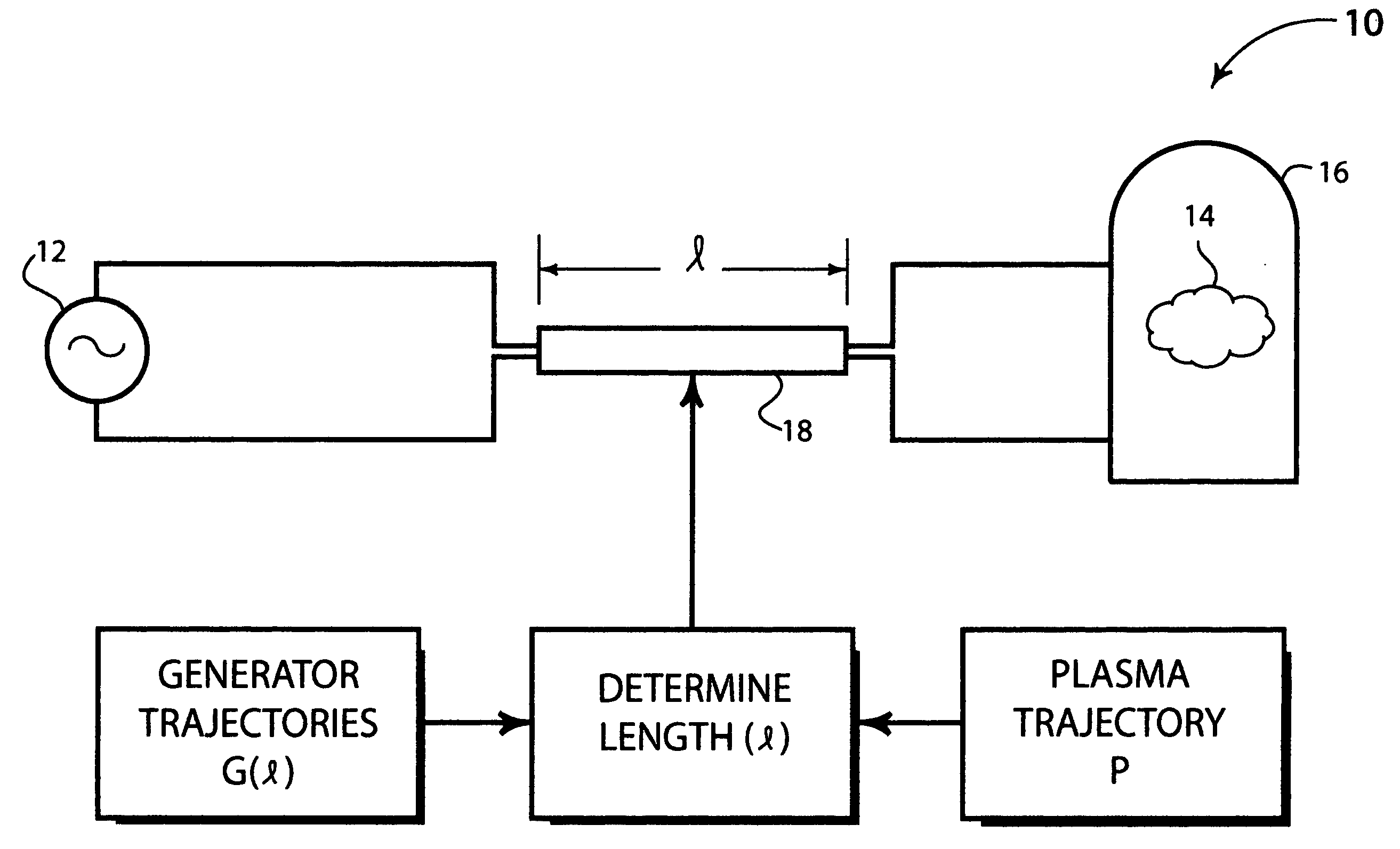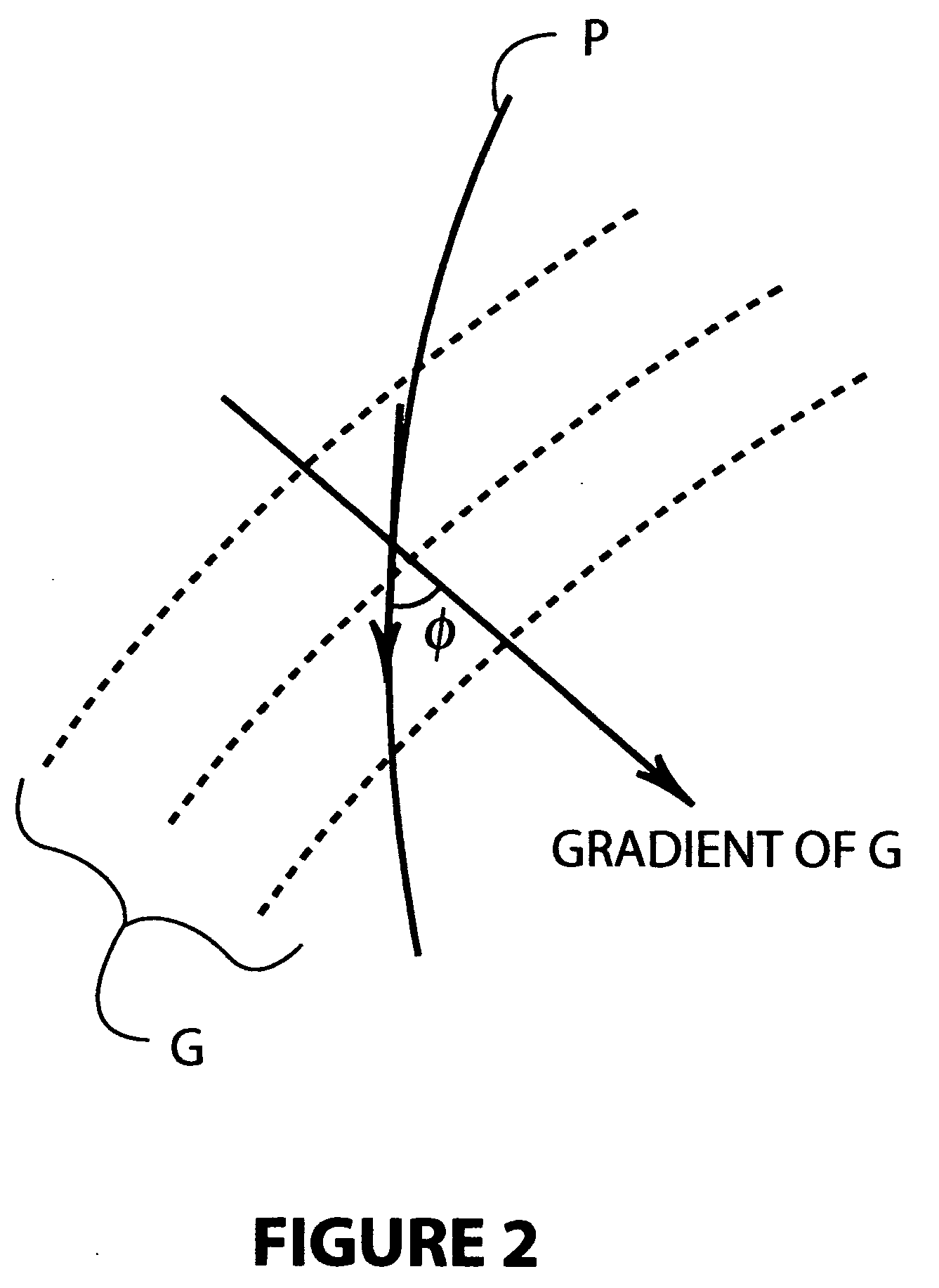Stabilizing plasma and generator interactions
a generator and plasma technology, applied in the field of plasma processing systems, can solve the problems of undesired drift or perturbation of process variables, adversely affecting power delivery, and insufficient use of impedance matching systems and control circuits to ensure plasma stability, so as to reduce or eliminate the effect of reinforcement or amplification of fluctuations in plasma impedance due to interactions between the generator and the plasma
- Summary
- Abstract
- Description
- Claims
- Application Information
AI Technical Summary
Benefits of technology
Problems solved by technology
Method used
Image
Examples
Embodiment Construction
[0028]FIGS. 1a, 1b, and 1c illustrate the general concept of trajectory matching in impedance space in order to stabilize interactions between a power delivery system and a plasma. The two dimensions of the space are the real and imaginary components of complex impedance. The coordinate system may be of any type including Cartesian, polar, or as represented in a Smith chart. For a given power generator, contours G define the set of impedance values at which the generator will deliver constant levels of power output. The contours represent the open-loop power output of the generator; that is, the power that the generator will deliver at various values of load impedance in the absence of any action by a power control loop. Also depicted in the impedance space are curves defining the real and imaginary impedance values of a plasma as a function of power delivered to the plasma. In FIG. 1a, curve PA has a trajectory, or slope, that is substantially aligned with the open-loop generator c...
PUM
 Login to View More
Login to View More Abstract
Description
Claims
Application Information
 Login to View More
Login to View More - R&D
- Intellectual Property
- Life Sciences
- Materials
- Tech Scout
- Unparalleled Data Quality
- Higher Quality Content
- 60% Fewer Hallucinations
Browse by: Latest US Patents, China's latest patents, Technical Efficacy Thesaurus, Application Domain, Technology Topic, Popular Technical Reports.
© 2025 PatSnap. All rights reserved.Legal|Privacy policy|Modern Slavery Act Transparency Statement|Sitemap|About US| Contact US: help@patsnap.com



